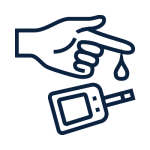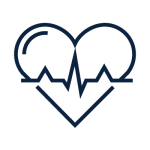WHAT’S YOUR COVID PLAN?
If you think you might have COVID-19, you could benefit from a plan.
Don’t wait to act!
Select your country below to begin:
Do you know how to tell if you have COVID-19?
It can be hard to tell the difference between symptoms of COVID-19 and symptoms of other illnesses, such as the flu (influenza) or a common cold.1
The only way to confirm whether you have COVID-19 is to get tested.
Test positive? Talk to your doctor about treatment options.
Do you know who is at risk for severe COVID-19?
While older adults are at greater risk of becoming severely ill from COVID-19, people of any age, with an underlying condition, can progress to severe COVID-19 as well. Some of these conditions include2:

Overweight

Cancer

Diabetes

Chronic kidney disease

Chronic obstructive pulmonary disease (COPD)

Heart disease
Your biggest risk factor for severe COVID-19 may be waiting too long to get tested.
Feeling unwell? At risk for severe COVID-19? Make a COVID plan!
3 STEPS THAT SHOULD BE PART OF EVERY COVID PLAN:

TEST: The only way to know for sure if you have COVID-19 is to get tested.

TALK: If you test positive contact your doctor right away to discuss next steps.

TAKE ACTION: Ask your doctor about at-home, prescription treatment options.
COVID=coronavirus disease; COVID-19=coronavirus disease 2019.
References: 1. Mayo Clinic Staff. COVID-19, cold, allergies and the flu: what are the differences? Published May 18, 2021. Accessed February 08, 2022. https://www.mayoclinic.org/diseases-conditions/coronavirus/in-depth/covid-19-cold-flu-and-allergies-differences/art-20503981 2. People with Certain Medical Conditions. Centers for Disease Control and Prevention. Accessed February 16, 2022. https://www.cdc.gov/coronavirus/2019-ncov/need-extra-precautions/people-with-medical-conditions.htmlv/coronavirus/2019-ncov/need-extra-precautions/people-with-medical-conditions.html





